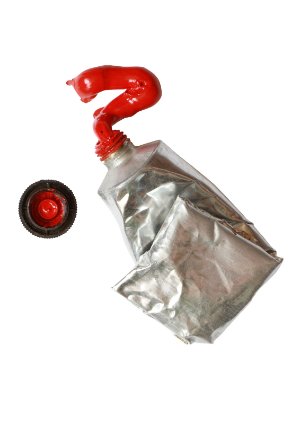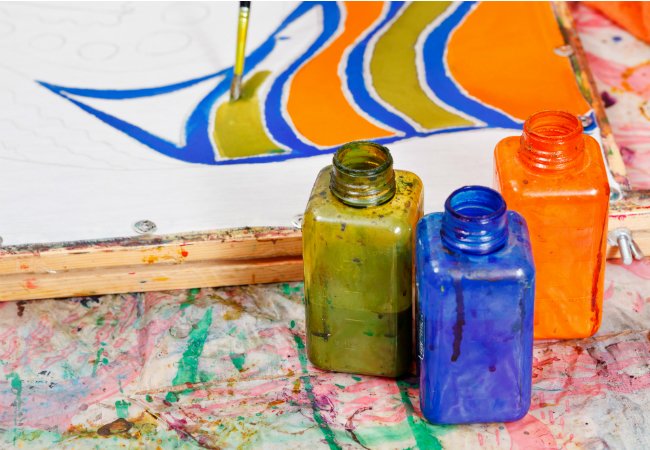We may earn revenue from the products available on this page and participate in affiliate programs. Learn More ›
We’re no strangers to the power of paint. It brightens dark rooms, adds interest to walls, and transforms furniture. It’s no surprise that paint can work wonders on textiles too. Though you might never have considered it before, you can introduce color and pattern to a wide array of fabric items in the home, including but not limited to furniture upholstery, curtains, throw pillows, wall hangings and more. Continue reading to learn how easy it can be to paint fabric successfully.
Tools & Materials
Bobvila.com may earn a commission from purchases made through these links.
Step 1
The first thing to know is that fabric paint comes in two main varieties—opaque and transparent. The former is more commonly used and behaves similarly to the wall paints you’re used to, while the latter helps do-it-yourselfers achieve subtle more effects, particularly when applied to light-colored fabrics.
In addition to choosing a type of fabric paint, you must also decide which tools to employ. While brushes, rollers, and sprayers are par for the course in wall painting, a different set of options are more useful here. As is so often the case in home improvement, the best tool for the job depends on the task at hand.
- Markers and pens are easy to work with and offer the sort of precision that lends itself well to detail work.
- Sprays work best in situations when you’re coating large swaths of fabric (e.g., curtains).
- Brushes are more difficult to master, but they allow you greater freedom in the mixing of colors. Different styles of brushes are suited to different purposes. While flat, so-called “shader” brushes create broad lines optimal for filling in a design, thinner brushes execute the long, thin strokes necessary for outlines.
- Stencils can help even inexperienced fabric painters achieve sharp edges and uniformity. For lettering and repetitive patterns, they are highly recommended.
- Sponges leave a more bubbled texture than markers and brushes create. In some cases you may want to keep that texture; in other cases, you may wish to minimize the texture by layering on additional paint. Use a sponge for a medium-to-large fabric surface areas. It’s also recommended for work with a stencil.

Step 2
Gather the fabric you’re planning to paint. Both natural and synthetic fibers can be painted, though keep in mind that paint spreads most easily on lightweight fabrics an least easily on heavy materials like cotton duck. If the fabric must remain washing machine-friendly, be sure to put it through the washer at least once prior to painting, using regular detergent but skipping the fabric softener. Shrinkage is likely to ruin a fabric paint job, so the goal is to get the initial shrinkage out of the way.
Step 3
Place a piece of cardboard directly beneath the fabric to be painted, thereby protecting against bleed-through. To keep the fabric from shifting while you work, secure it to the cardboard by means of pins.
Step 4
Start painting the fabric at its top, working your way down section by section. Doing so helps minimize the risk of accidentally smudging any areas you’ve already painted. Once finished, to be on the safe side, let the paint dry for a little longer than the amount of time recommended by the manufacturer.
Step 6
Go over the fabric with a hot clothing iron to prevent the paint from coming off in the wash. But rather than bring the iron into contact with the paint, hold it just above the surface, hovering a couple inches above. Alternatively, iron the opposite, non-painted side of the fabric, if possible, for identical results.
Additional Fabric Painting Tips
- Practice your design on surplus fabric before you begin painting in earnest. That can give you a feel for how the paint takes to the fabric, while allowing you to gain comfort using your chosen paint tools.
- Wash your hands and tools thoroughly between coats, if you decide multiple applications are needed.
- To avoid mishaps with a stencil, remove it along with any tape as soon as possible after painting.


